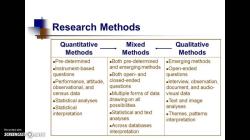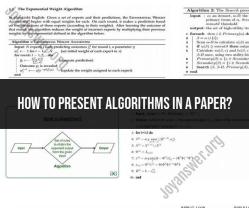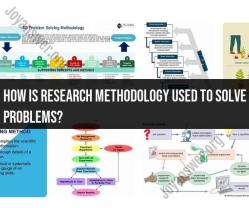What are the types of data/research outputs?
Data and research outputs encompass a wide range of information collected, analyzed, and disseminated in various fields of study and industries. Understanding the different types of data and research outputs is essential for conducting effective research and making informed decisions. Here's a comprehensive overview of the various types:
Types of Data:
Quantitative Data: Data that can be measured and expressed numerically. Examples include counts, measurements, and statistical data.
Qualitative Data: Non-numerical data that describes qualities or characteristics. Examples include text, audio recordings, and images.
Categorical Data: Data that falls into discrete categories or groups, often represented by labels. Examples include gender, ethnicity, and product categories.
Continuous Data: Data that can take on an infinite number of values within a range. Examples include height, weight, and temperature.
Primary Data: Data collected firsthand by researchers for a specific research project or purpose.
Secondary Data: Data collected by someone else for a different purpose but used by researchers for their own studies.
Structured Data: Data organized in a systematic and well-defined manner, often stored in databases or spreadsheets.
Unstructured Data: Data that lacks a specific structure and may include text documents, emails, or social media posts.
Time-Series Data: Data collected at multiple points in time, typically at regular intervals, to analyze trends and patterns.
Cross-Sectional Data: Data collected from multiple subjects or entities at a single point in time to make comparisons or observations.
Types of Research Outputs:
Research Papers: Academic or scholarly documents presenting research findings, methodologies, and analysis. Published in journals, conferences, or reports.
Theses and Dissertations: Extensive research documents written by graduate students to earn advanced degrees. They contribute to the body of knowledge in a particular field.
Reports: Documents that summarize research findings, often commissioned by organizations, government agencies, or research institutions.
Books: Comprehensive publications that provide in-depth coverage of a particular research topic or subject.
Presentations: Oral or visual presentations of research findings, often accompanied by slides or visual aids.
Data Sets: Collections of structured or unstructured data used for analysis or research purposes.
Visualizations: Graphs, charts, maps, and other visual representations of data to communicate findings effectively.
Policy Briefs: Concise documents designed to inform policymakers and the public about research findings and their implications.
Patents: Legal documents that protect the intellectual property rights of inventors and innovators.
Prototypes and Models: Physical or digital representations of products, systems, or concepts developed during research and development processes.
Code and Algorithms: Software code and algorithms developed for research, often used in data analysis, simulations, and modeling.
Artifacts: Tangible objects created during research, such as archaeological artifacts or experimental prototypes.
Surveys and Questionnaires: Tools used to collect data from respondents, often in the form of structured questions.
Policy Recommendations: Guidelines and suggestions based on research findings for informing decision-making and policy development.
Open Access Data: Data and research outputs made available to the public without restrictions, often to promote transparency and collaboration.
These various types of data and research outputs serve as critical components of the research process and contribute to the advancement of knowledge, decision-making, and innovation across diverse fields and industries. Researchers and organizations choose the most appropriate types based on their objectives and the nature of their research.













